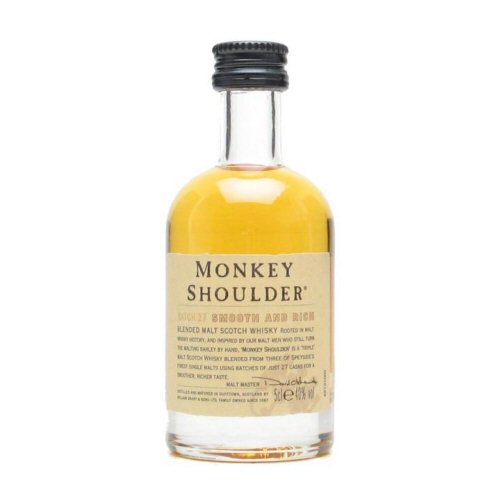

McClelland’s Speyside: 6.70 ± 0.43 on 6 reviews ($$) McClelland’s Lowland: 7.02 ± 0.50 on 4 reviews ($$) Glenlivet Founder’s Reserve: 7.97 ± 0.39 on 14 reviews ($$) Glen Grant The Major’s Reserve: 7.96 ± 0.61 on 10 reviews ($$) Let’s see how it compares to other blended malt or entry-level single malt whiskies in my Meta-Critic Database.Īberlour 10yo: 8.27 ± 0.34 on 15 reviews ($$)Īrran Malt Robert Burns Single Malt 8.22: ± 0.56 on 8 reviews ($$)Īuchentoshan 12yo: 8.28 ± 0.26 on 23 reviews ($$$)Īuchentoshan American Oak: 7.78 ± 0.85 on 8 reviews ($$)īenromach Traditional: 8.43 ± 0.44 on 12 reviews ($$) It is bottled slightly above the industry standard, at 43% ABV. It is currently $65 CAD at the LCBO, which is steeper than most places. Monkey Shoulder is very reasonably priced in most jurisdictions, typically around the level of higher-end blends or entry-level single malts. Obviously, this would no longer be permitted today. “Monkey Shoulder” is the crude name for the condition that some malt workers developed after long shifts, where one of their arms would hang down – similar to some monkeys. This required constant turning of the barley, so that it didn’t over-germinate into a solid mass – a task traditionally done by hand. In the traditional method, malting of barley would be done across a large floor (for the extended surface area). In case you are wondering about the unusual name, it comes from a historic occupational strain injury that floor malters suffered from in the early years of whisky production.

In this case, I believe the blend is exclusively from first-fill ex-bourbon casks, but there are of course no guarantees if that isn’t indicated on the label. You may not have heard of the first one (since most of its malt production goes into blended scotches), but the other two should be familiar to single malt drinkers – and will give you an idea as to what flavour profile to expect here. Monkey Shoulder is a commonly available, reasonably priced, no-age-statement blended malt from three classic Speyside distilleries controlled by William Grant & Sons: Kininvie, Balvenie, and Glenfiddich. But just as blended scotches have long occupied the entry-level price point, most blended malts are similarly inexpensive and without age statements – although there are of course always exceptions (e.g., see the Taketsuru line of Japanese malt whiskies). In principle, there’s no reason why a blended malt would not be every bit as good as a single malt, since it is only the number of distilleries that differ. But there is the intermediate category called a blended malt (aka vatted malt or “pure malt”) where malt whisky from multiple distilleries are brought together. A blended scotch is defined as a blend of malt whisky and cheaper-to-produce grain whisky. Unless it is specifically identified as a “single cask”, you are definitely getting multiple barrels mixed together for your single malt. As I explain on my single malts vs blends page, a single malt simply means a blend (or vatting) of different malts whiskies from a single distillery. Monkey Shoulder is a great example of one of the (not so) best kept secrets in the whisky world.


 0 kommentar(er)
0 kommentar(er)
